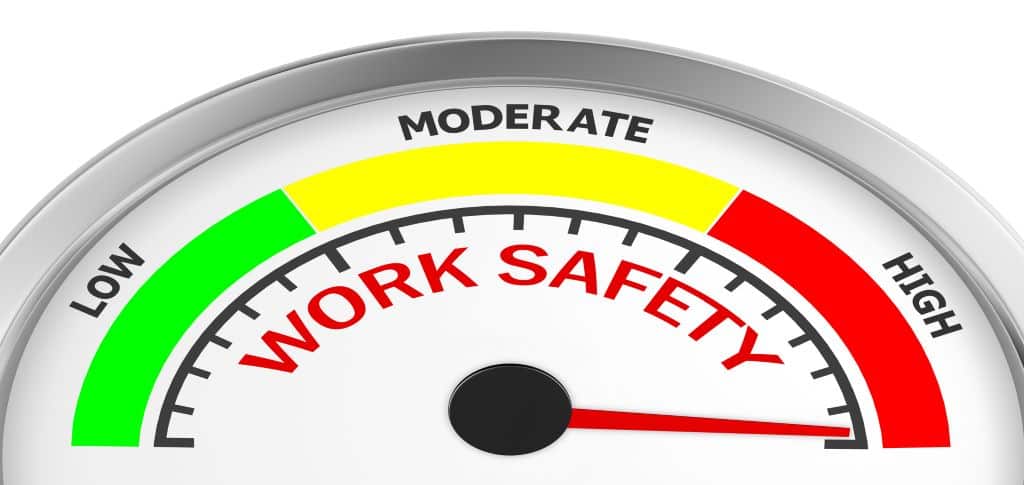Fire Safety in The Workplace: Understanding Why it is Important

Every business has a duty to ensure that it meets all safety regulations and legislation. Fire safety is no different which is why fire safety in the workplace has to be managed correctly. As a result, employers will have to carry out regular checks and maintenance to ensure that the right fire protection and fire prevention measures are in place. Employers have to keep staff safe, visitors as well as the public which is the reason why workplace fire safety is paramount. In this article, we are going to look at why it is important and what it means.
What is Fire Safety in a Workplace?
Fire safety in the workplace in the UK refers to the measures and precautions taken to prevent fires from starting and to ensure the safety of employees and visitors in the event of a fire. This includes conducting fire risk assessments, providing fire fighting equipment, training employees on fire evacuation procedures, and ensuring that all buildings and equipment are fire-resistant and meet fire safety regulations. The primary legislation governing fire safety in the UK is the Regulatory Reform (Fire Safety) Order 2005.
In the UK, regulations set out the general duties of employers and building owners to ensure the safety of their employees, visitors and anyone else who may be affected by a fire in the workplace. This legislation requires employers to carry out a fire risk assessment, identify potential fire hazards, and put in place appropriate fire safety measures to minimise the risk of a fire occurring and to ensure that people can safely evacuate the building in the event of a fire.
Why is it Important?
Fire safety in the workplace is important for several reasons. Firstly, it helps to prevent fires from occurring in the first place. By identifying potential fire hazards and taking appropriate fire safety measures, the risk of a fire starting can be significantly reduced, which helps to ensure the safety of employees and visitors.
Secondly, fire safety is important in the workplace because it helps to ensure that people can safely evacuate the building in the event of a fire. The consequences of a fire can be catastrophic, and it is essential that employees and visitors are able to evacuate the building quickly and safely. This means that escape routes must be clearly marked and unobstructed, and that employees must be familiar with the evacuation procedures.
Fire Safety Regulations in the Workplace
In the UK, the main legislation governing fire safety in the workplace is the Regulatory Reform (Fire Safety) Order 2005. This legislation sets out the responsibilities of employers and building owners to ensure fire safety in the workplace.
The key provisions of the Regulatory Reform (Fire Safety) Order 2005 include:
- Fire risk assessment: Employers must carry out a fire risk assessment to identify potential fire hazards and to put in place appropriate fire safety measures to minimise the risk of a fire occurring.
- Fire fighting equipment: Employers must provide fire-fighting equipment such as fire extinguishers and fire blankets, and ensure that employees are trained on how to use them.
- Escape routes: Employers must ensure that escape routes are clearly marked and unobstructed, and that employees are familiar with the evacuation procedures.
- Fire alarms and smoke detectors: Employers must install fire alarms and smoke detectors, and ensure that they are regularly tested and maintained.
- Electrical equipment and heating systems: Employers must ensure that electrical equipment and heating systems are properly maintained and stored to minimise the risk of fire.
- Flammable materials: Employers must ensure that flammable materials are stored safely and away from potential sources of ignition.
- Building structures: Employers must ensure that all building structures, including walls, doors, and windows, are fire-resistant.
- Fire evacuation plan: Employers must have a fire evacuation plan in place, and regularly practise fire drills to ensure that employees are familiar with the evacuation procedures.
- Regular review: The fire risk assessment must be reviewed regularly, and any necessary changes to fire safety measures must be implemented promptly.
Who Enforces the Fire Safety Order?
In the UK, the enforcement of the Regulatory Reform (Fire Safety) Order 2005, which governs fire safety in the workplace, is the responsibility of local fire and rescue services. The local fire and rescue services have the power to inspect workplaces and enforce compliance with fire safety regulations.
If a fire and rescue service inspector find that a workplace is not in compliance with the fire safety regulations, they can serve a notice requiring the employer to take appropriate action to address the breach. This could include carrying out a fire risk assessment, installing fire-fighting equipment, or making changes to the building to ensure that it is fire-resistant.
If the employer fails to take the necessary action, the fire and rescue service may take legal action, which could result in fines, imprisonment, and other penalties.
Who is Responsible for Fire Safety?
Key Responsibilities of a Workplace Building Owner
As the responsible person for your business premises, you have several important fire safety responsibilities that you must consider. These include:
- Regular fire risk assessments: To ensure the safety of your employees and visitors, you must conduct fire risk assessments on a regular basis to identify potential fire hazards and implement appropriate fire safety measures.
- Staff awareness: It is your responsibility to inform your staff of any potential fire hazards in the workplace and to educate them on how to respond in the event of a fire.
- Fire safety measures: You must put in place fire safety measures that are appropriate for your premises, and maintain them to ensure they remain effective.
- Emergency plan: In the event of a fire, you must have an emergency plan in place that outlines how your staff should respond to evacuate the building safely.
- Employee training: You must provide your employees with the necessary training to be prepared if a fire occurs. This includes educating them on fire safety procedures and how to use fire-fighting equipment.
- Building work considerations: When planning any building work or extensions, it is important to consider the potential fire risks and implement any necessary fire safety measures.
Key Responsibilities of Employees for Fire Safety
Employees also have important responsibilities with regard to fire safety in the workplace. These responsibilities are crucial in helping to minimise the risk of fire and to ensure the safety of everyone in the workplace. Some of the key responsibilities of employees for fire safety include:
- Following fire safety procedures: Employees must be familiar with the fire safety procedures and evacuation plan for the building and must follow them in the event of a fire.
- Reporting fire hazards: If an employee notices a potential fire hazard, they must report it to the designated person in charge, who will be responsible for addressing it.
- Using fire-fighting equipment safely: If an employee needs to use fire-fighting equipment, they must know how to use it safely and follow the manufacturer’s instructions.
- Evacuating the building: In the event of a fire, employees must evacuate the building immediately and follow the evacuation plan.
- Not interfering with fire safety equipment: Employees must not interfere with fire safety equipment such as fire alarms, smoke detectors, or fire-fighting equipment.
- Reporting incidents: If a fire does occur, employees must report it to the fire and rescue service immediately, and provide any relevant information about the fire and its location.
Recommended Fire Safety Systems
Fire Alarm Detection Systems
A fire alarm system is designed to detect smoke, heat, or fire and provide an alarm signal to building occupants. This system is essential in ensuring that people are alerted to a potential fire in a timely manner and can evacuate the building safely.
Fire alarms should be installed in centralised locations as well as at the top of stairways in multi-story structures. This ensures that the alarm is easily heard by everyone in the building and provides adequate coverage for all occupants.
Fire Suppression Systems
A fire suppression system is an important safety measure used to control and extinguish fires in a building. It works by releasing fire-suppressing agents such as dry chemicals, inert gases, CO2, or water mist when smoke is detected by the system.
Fire Extinguishers and Signage
Fire extinguishers are a vital component of fire safety in buildings. They are designed to tackle fires in their early stages and can be used by anyone in the building to quickly extinguish them. The types of fire extinguishers available include water, powder, foam, CO2, and wet chemicals.
It is important to have fire extinguishers placed in easily accessible locations throughout the building so that they can be used quickly in the event of a fire. Employees should also receive fire extinguisher training so they know how to use them effectively.
Fire safety signs are also important in marking the locations of fire safety equipment, fire alarm activation points, warning signs, and fire exits. These signs provide clear and concise information through text and imagery, enabling employees to quickly and easily locate the necessary equipment in an emergency.
Fire Safety Tips for the Workplace
Tip #1 – Choose a Responsible Person
Put one responsible person in charge of maintaining fire safety in the workplace. They will have the responsibility of ensuring everything is in place, that training is maintained and that the workplace is safe. It makes sense to have more than one responsible person as this helps to overcome problems with illness or annual leave.
Tip #2 – Ensure Employees have Fire Safety Training
All employees should receive fire safety training. This will ensure that they are aware of procedures, where fire safety equipment is and how to escape the premises should a fire break out.
Tip #3 – Make Signage Clear
All signs should be clear and installed in the right location. They should clearly indicate where fire safety equipment can be found, where dangers are likely and what action to take. They should also clearly highlight escape routes too.
Tip #4 – Carry Out Risk Assessments
It is not possible to protect against fire if you are not aware of the potential hazards. Therefore, a thorough risk assessment, which is a legal requirement, can help you to determine the risks and take the necessary steps to mitigate these risks.
Fire Safety in the Workplace Training
Under the Fire Safety Act 2005, all employees are required to receive training on the necessary precautions and actions to keep themselves and others safe in the workplace. This is the legal responsibility of the employer to ensure that their employees receive proper fire safety training that is appropriate to their work environment. This training should be provided when employees first start working in the workplace.
In essence, it is important for employers to take their obligation to provide fire safety training to their employees seriously. This training helps ensure that employees know what to do in the event of a fire and can play an important role in preventing fires and protecting the safety of all individuals in the workplace.
Conclusion
Fire safety is paramount in the workplace. It is the responsibility of employers and building owners to take the necessary steps to reduce the risk of fires. However, employees should also receive the relevant training so they know what action to take. Fire safety could be seen to be a collective process whereby everyone has a role to play but without the right approach, fire safety will become an issue.
